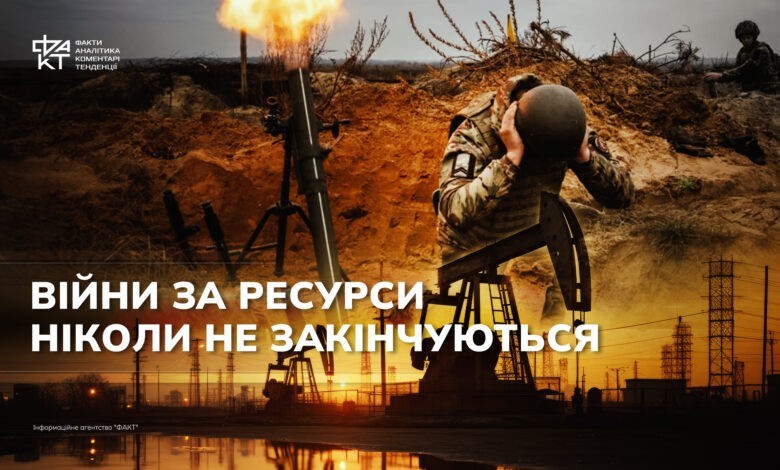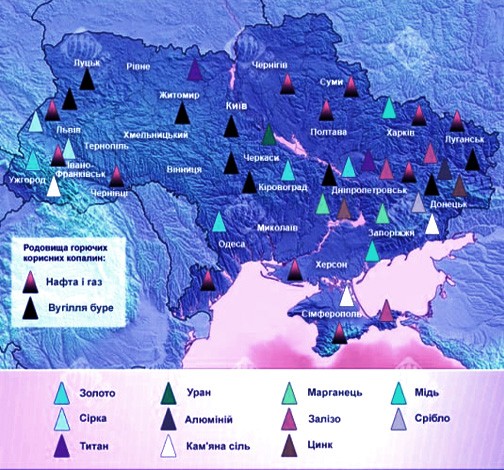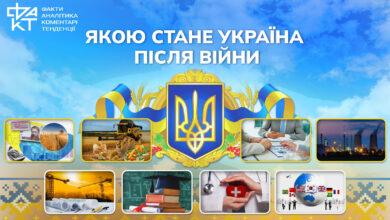The Path to Geopolitical Leadership: How Useful Natural Resources Become a Catalyst for Global Conflict

Wars are different: they can be religious, ideological, civil or even cold, when the weapons are not bullets, but economic sanctions and information wars. However, behind this diversity of motives is often hidden the desire for useful natural resources. There are many examples in human history where conflicts started under the guise of defending faith or freedom, but in reality their goal was the control of natural resources, land or markets. In such wars, under the guise of high ideals or noble goals, morality recedes into the background, and the ambitions of those who crave power and wealth come to the fore.
Modern military conflicts are also no exception. Under the slogans about the protection of national interests, there is often a desire to have access to oil, gas, water, black soil or other strategically important resources. Moreover, countries and their people become hostages of the global game, where the rules are dictated not by ethics or law, but by force and cunning. Let’s analyze how economic interests, disguised as patriotic appeals, push nations to bloodshed, and what lessons should be learned from these dark pages of history.
The most famous military conflicts that were started over useful natural resources
On June 23, 1757, the famous Battle of Plessa took place near the Bhagirathi River in West Bengal. British forces inflicted a crushing defeat on the French-backed forces of the Nawab of Bengal, Siraj ud-Daulah. As a result, the British took control of India’s raw materials and trade routes.
Another example is the American Civil War in 1965. Although its official cause was the struggle to abolish slavery, it must not be forgotten that slavery was the basis of the production of cotton and most other agricultural products. The civil war led to a severe shortage of cotton in Europe, which had serious economic consequences for the region.
During America’s struggle for independence from the British crown in the 18th century, France actively supported the revolutionaries. But, unlike Americans who sought freedom, France pursued its selfish interests. It sought to seize control of the trade routes and markets formerly under the authority of London, and to concentrate on itself the trade in agricultural crops exported from the Americas.
One version of the reasons for the hostilities between the Soviet Union and Finland in the first half of the 20th century is the USSR’s need for significant reserves of nickel for the defense industry. On the territory of Finland there was a deposit in Petsamo, which became the object of fierce battles, in particular during the Battle of Petsamo.
The attack of the Japanese air force on the American fleet in Pearl Harbor in 1941 was not a separate war either, but became a starting point for the participation of the United States in the Second World War. Japan sought to destroy the advanced American naval forces in order to secure control over the significant hydrocarbon reserves in Southeast Asia, as well as over the ore deposits and food supplies.
World War II, one of the most tragic and large-scale events in world history, had many causes, among them the struggle for ideological, political and economic supremacy. However, an important component of this war was the desire of Nazi Germany to seize natural resources, which played a key role in ensuring the military campaign and further economic development. One of Hitler’s main goals was to capture the oil fields of the Caucasus, rich deposits of coal in Donbas and iron ore in Kryvyi Rih.
In addition, Ukraine, as a part of the Soviet territory, was considered by the Nazis as the breadbasket of Europe, since it had significant cultivated areas that could provide Germany with food during the war. For example, the fascists transported chernozem from Ukraine to their homes in wagons. In addition to agricultural resources, the territory of Ukraine contained rich deposits of coal and iron ore, as well as industrial centers capable of supporting the war economy of Germany. Seizing these resources became part of Hitler’s plan to turn the USSR into a colonial territory, exploiting its wealth to strengthen the Third Reich. The capture of the USSR should provide Germany with independence from the import of raw materials necessary for waging war and create a basis for economic growth based on the exploitation of the resources of the occupied territories.
In 1990, a military conflict took place, which even today remains one of the most controversial in modern history. Iraq under Saddam Hussein invaded Kuwait, accusing it of stealing oil. Under this pretext, Iraq tried to seize the oil fields of Kuwait, destroy its oil industry, cause a jump in oil prices, and with this help pay off the huge debt accumulated during the war with Iran. The United States joined this conflict, for which stable oil supplies were also of great importance.
In the South China Sea, there is still a tense situation, the basis of which is, as always, oil. China claims the disputed islands, and Japan, Taiwan and Vietnam oppose it in this matter. Taking into account the claimed rights, China has oil reserves comparable to those of Saudi Arabia. Therefore, the position of the PRC is clear, but it is not known how the conflict will end. In recent years, experts increasingly point to the active expansion of China’s military presence in the region.
The Falkland Islands have also become another hot spot in the conflict over oil. Argentina claims that these territories belong to it, while Great Britain is sure of the opposite. In 2010, British companies began drilling oil wells near one of the islands, and the old conflict, which had already led to military intervention, was renewed with renewed vigor.
Resource potential of Ukraine
Ukraine has extremely rich reserves of natural resources, which makes it one of the leading countries in the world in terms of their quantity and diversity. Despite the fact that its territory occupies only 0.4% of the world’s land area, it provides up to 5% of the world’s mineral production. Thanks to this, Ukraine ranks fourth in the world in terms of the total value of natural resources.
Ukraine is the first in Europe in terms of explored reserves of uranium ores and ammonia production. It ranks second in Europe and tenth in the world in terms of reserves of titanium ores, as well as second in the world in terms of reserves of manganese ores, which make up 12% of world reserves. In addition, Ukraine has the second place in the world in terms of iron ore reserves, which amount to 30 billion tons, and the second place in Europe in terms of mercury ore reserves. Ukraine ranks seventh in the world in terms of coal reserves, which amount to 33.9 billion tons.
According to experts, Ukraine ranks third in Europe in terms of shale gas reserves, second only to Poland and France. The total volume of technically possible shale gas resources for extraction on the territory of Ukraine is approximately 3.6 trillion cubic meters, which is 1.75% of world reserves. The largest deposits are concentrated in the Yuziv field, which covers the Donetsk and Kharkiv regions, as well as in the Oleska field in Western Ukraine, where together about 1.2 trillion cubic meters of gas are concentrated. These resources have great potential and require active use.
Ukraine is also known for its agricultural potential: it ranks first in Europe in terms of arable land and third in the world in terms of chernozem, which accounts for 25% of the world’s reserves. Before the start of the war, Ukraine also held the second place in Europe and the fourth in the world in terms of the capacity of the gas transportation system, capable of passing 142.5 billion cubic meters of gas per year to EU countries. It is the third largest exporter of iron in the world, the fourth largest exporter of clay and titanium, the eighth largest exporter of ores and concentrates, and the tenth largest producer of steel (32.4 million tons per year).
147 deposits of all groups of metals, including ferrous, non-ferrous, noble, radioactive, rare and rare-earth metals, have been discovered on the territory of Ukraine. These deposits are located within the Ukrainian crystalline shield, Dnipro-Donetsk, Dniester-Black Sea and Carpathian-Crimea metallogenic provinces. In Ukraine, deposits of iron, manganese, uranium, titanium ores, as well as copper, gold, chromium, nickel, beryllium, lithium, vanadium, scandium, lead, zinc, aluminum, niobium, tantalum, strontium, hafnium, cadmium, silver and rare earth elements. There is also a high probability of discovering deposits of tungsten, tin, molybdenum, platinoids and other rare metals.

Also, Ukraine has a unique mineral and raw material base, about 20,000 deposits and manifestations of 117 types of minerals have been discovered in its depths. Of these, 8,172 deposits are of industrial importance and contain reserves of 94 types of mineral raw materials. 2,868 deposits are involved in industrial exploitation, where more than two thousand mining and processing enterprises work.
In addition, Ukraine takes the leading places in the world in terms of reserves of non-metallic minerals. For example, deposits of native sulfur and ozokerite in Precarpathia are the largest in the world, and reserves of granite and labradorite in Zhytomyr Oblast are beyond competition in Europe. The country also has deposits of precious and semi-precious stones, including beryl, amethyst, amber, jasper, and rock crystal, which are concentrated in Kryvorizhzhia, Azov, Crimea, and Transcarpathia.
All these mineral resources are a powerful base for the development of the mining industry of Ukraine. The production of the mining industry ensures the functioning of key sectors of the economy, such as energy, ferrous and non-ferrous metallurgy, the chemical industry, the glass, porcelain and earthenware industry, and the production of building materials.
Our country also occupies a leading position in Europe in terms of hydrothermal resources. It is rich in large reserves of various mineral waters, which have high medicinal properties and provide the country with one of the first places in Europe.
Ukraine as a player in the world market of useful natural resources
Historically, critical natural resources have had a significant impact on global geopolitics and economics. Only a few states control a significant part of them in the world market, ensuring their influence and strategic advantage. However, Ukraine, which has significant potential, has not yet been able to join this circle, although it has every chance to change the situation.
Currently, the world market of useful resources is under the control of several key players. First among them is China, which dominates the production of rare earth elements, controlling about 97% of world production. Also, this country processes most of the world’s lithium and cobalt reserves, securing a leadership position in global supply chains and the ability to influence other countries.
In addition to China, important players in the market of critical resources are the USA, the European Union, Australia, Canada and several countries in Africa and South America. Australia, for example, controls about half of the world’s lithium production, while Canada provides a significant share of nickel and cobalt production. Africa, in particular the Democratic Republic of Congo, supplies more than 60% of the world’s cobalt. South America (Chile and Argentina) are also significant players in the lithium market, controlling together about a quarter of the global volume. At the same time, the European Union, on the contrary, still plays an insignificant role in this market, which forces it to look for alternative sources of supply.
Ukraine can play an important role in this process, because it has significant reserves of critical materials, such as lithium. Three lithium deposits have been explored in Ukraine, and there are also prospects for further discoveries. These and other natural resources could become an important element for the EU, which seeks to reduce its dependence on China and other external suppliers. In particular, in 2021, the Memorandum on strategic partnership between Ukraine and the EU in the field of critical raw materials was signed. This agreement provides for the development of joint projects, the creation of infrastructure for the extraction and processing of critical materials, as well as the formation of value-added chains.
By entering the world market of critical raw materials, Ukraine will be able to significantly influence the global economy. It will be able to supply resources to the EU and other countries, reducing their dependence on China and other dominant players. It will also help to attract foreign investments, promote the development of new technologies and strengthen the country’s economy. Therefore, Ukraine can become an important participant in the world market, which will increase its geopolitical influence.
It should be noted that competition in the market of critical resources is growing rapidly in the world. Countries are actively expanding their capabilities, creating international alliances and investing in new technologies to ensure the stability of their supplies and reduce dependence on large players. Ukraine also participates in these processes, in particular through the signing of strategic agreements with the EU. The demand for critical materials is expected to increase significantly in the coming decades. According to the International Energy Agency, by 2040 the global demand for lithium and graphite will increase many times. This is due to the development of renewable energy sources and the increase in the production of electric vehicles. Demand for cobalt and nickel, which are used in the production of batteries and other high-tech products, is also expected to grow.
However, as demand grows, so do the risks to ensuring stable supplies. Geopolitical tensions, growing conflicts and possible trade wars could create serious obstacles to access to these resources, requiring countries to adopt careful and thoughtful policies.
As already mentioned, Ukraine is one of the richest countries in the world in terms of natural resources, which makes it extremely attractive for many states and international corporations. It is this resource potential that largely affects the geopolitical situation around the country and is one of the hidden causes of aggression by external forces. Significant mineral deposits located on our territory make it a key player in the field of critical raw materials. The global economy is increasingly dependent on these resources, and control over them opens up opportunities for significant economic and political influence.
A general analysis of wars caused by the struggle for natural resources shows that such conflicts always have deep economic motives. They are often disguised as political, ideological or even moral goals. These wars demonstrate that control over useful natural resources can become a decisive factor in international relations, and sometimes have catastrophic consequences for all of humanity.
Oksana Ishchenko





